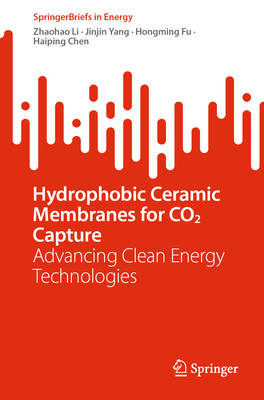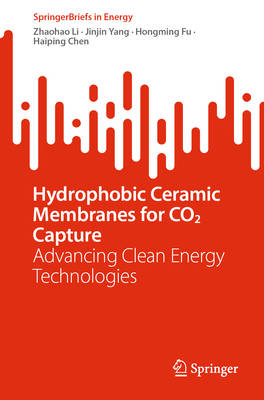
- Afhalen na 1 uur in een winkel met voorraad
- Gratis thuislevering in België vanaf € 30
- Ruim aanbod met 7 miljoen producten
- Afhalen na 1 uur in een winkel met voorraad
- Gratis thuislevering in België vanaf € 30
- Ruim aanbod met 7 miljoen producten
Hydrophobic Ceramic Membranes for CO2 Capture
Advancing Clean Energy Technologies
Zhaohao Li, Jinjin Yang, Hongming Fu, Haiping ChenOmschrijving
This book focuses on developing and optimizing ceramic membranes with hydrophobic and superhydrophobic properties for CO2 capture in membrane contactors, aimed at improving CO2 capture technology in thermal power plants and other industries. It examines the preparation of ceramic membranes, the mass transfer mechanisms in porous media, and the specific processes involved in capturing CO2. The book also compares the performance of commercial Al2O3 ceramic membranes with traditional polytetrafluoroethylene membranes and explores ways to enhance the efficiency of CO2 capture by addressing challenges such as membrane wetting and increased mass transfer resistance. Additionally, it introduces a cost-effective superhydrophobic ceramic membrane made from power plant waste fly ash, analyzing its performance and surface dynamics for CO2 capture applications. It is a useful tool for researchers, academics, professionals and graduates interested in the field of chemical engineering, environmental science, and materials science, particularly those focused on CO2 capture technologies, membrane science, and clean energy solutions.
Specificaties
Betrokkenen
- Auteur(s):
- Uitgeverij:
Inhoud
- Aantal bladzijden:
- 93
- Taal:
- Engels
- Reeks:
Eigenschappen
- Productcode (EAN):
- 9783031776779
- Verschijningsdatum:
- 4/12/2024
- Uitvoering:
- Paperback
- Formaat:
- Trade paperback (VS)
- Afmetingen:
- 155 mm x 235 mm
- Gewicht:
- 197 g

Alleen bij Standaard Boekhandel
Beoordelingen
We publiceren alleen reviews die voldoen aan de voorwaarden voor reviews. Bekijk onze voorwaarden voor reviews.











